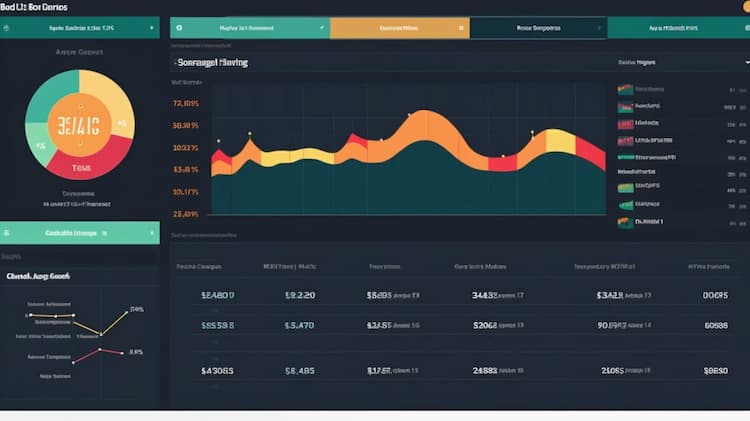
XLF VS FXO
Exchange-Traded Funds (ETFs) have rapidly gained popularity as flexible investment vehicles that offer exposure to a diverse range of sectors and asset classes. In this article, we will conduct an in-depth comparison between two prominent ETFs: XLF (Financial Select Sector SPDR Fund) and FXO (First Trust Financials AlphaDEX Fund). We'll explore critical aspects including ETF tickers, full names, issuers, sectors, top holdings, capitalization, strategy, tracking, and exposure.
XLF Vs FXO: Overview
XLF and FXO are two ETFs with distinct approaches within the financial sector. While XLF aims to track the performance of companies in the financial sector, FXO takes a more targeted approach by using an AlphaDEX methodology to select financial stocks. These differing strategies result in varying exposures and risks, which we will delve into further.
XLF Vs FXO: Sectors and Top Holdings
The XLF ETF is primarily invested in various subsectors within the financial industry, including banks, insurance, real estate, and diversified financial services. Its top holdings often include industry giants like JPMorgan Chase, Berkshire Hathaway, and Bank of America. On the other hand, FXO utilizes a unique strategy to select financial stocks based on multiple factors, such as growth and value. Understanding the sectors and top holdings is crucial for investors seeking alignment with their financial sector preferences.
 XLF overlap XLF VS FXO
XLF overlap XLF VS FXO
XLF Vs FXO: Capitalization and Strategy
XLF boasts substantial assets under management (AUM), making it one of the largest financial sector ETFs. Its strategy revolves around capturing the overall performance of the financial industry. In contrast, FXO employs a proprietary AlphaDEX methodology, which uses quantitative screens to select financial stocks based on factors like value and growth potential. The difference in capitalization and strategy between these ETFs provides investors with diverse opportunities for returns and risk exposure.
XLF Vs FXO: Tracking and Exposure
XLF tracks a market-cap-weighted index, aiming to mirror the performance of the financial sector. This means that the ETF's performance is closely tied to the broader trends within the financial industry. FXO, however, takes a more nuanced approach. Its AlphaDEX methodology seeks to identify financial stocks with the potential to outperform based on various factors. This unique approach results in differentiated exposure compared to traditional market-cap-weighted ETFs. Understanding the tracking methods and exposure nuances is essential for investors looking to tailor their financial sector investments.
Conclusion
XLF and FXO offer investors distinct pathways to engage with the financial sector. Whether you're interested in broad exposure or a targeted approach, these ETFs provide opportunities to align your investment strategy with your financial outlook. If you're seeking in-depth insights into holdings, correlations, overlaps, and other critical details, ETF Insider is an invaluable tool to explore. With its user-friendly app, ETF Insider empowers investors with comprehensive information about these ETFs and other financial instruments.
Disclaimer: This article is for informational purposes only and does not provide investment advisory services.
Sources:
https://www.etf.com/ FXO ETF issuer
https://www.etf.com/FXO FXO ETF official page
XLF quote and analysis
Discover the top holdings, correlations, and overlaps of ETFs using our visualization tool.
Our app allows you to build and track your portfolio.
To learn more about the XLF Financial Select Sector SPDR Fund, access our dedicated page now.
FAQ
Why is XLF better than FXO?
XLF may be considered better than FXO for some investors due to its specific focus, offering diversification.
Does FXO beat XLF?
FXO's performance relative to XLF will vary over time, depending on market conditions.
Should I invest in XLF or FXO?
The choice between XLF and FXO should align with your investment goals, risk tolerance, and desired exposure.
Are XLF and FXO good investments?
Both XLF and FXO can be suitable investments depending on individual investment strategies, goals, and risk profiles.
What is the correlation between XLF and FXO?
The correlation between XLF and FXO can vary over time, reflecting differences in performance.

















